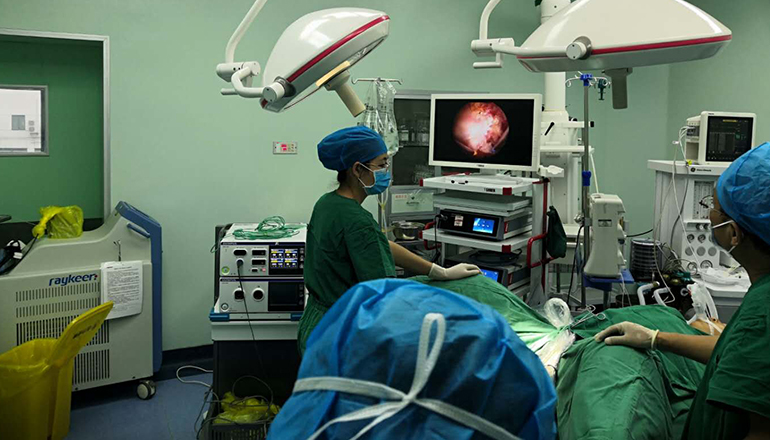- Shanghai, China
- [email protected]
- +86-21-58189111
Hysteroscopy is a medical procedure that allows the visualization of the inside of the uterus using a thin, lighted instrument called a hysteroscope. This procedure is typically performed by gynecologists to diagnose and treat various gynecological conditions such as abnormal uterine bleeding, infertility, and uterine fibroids.
To perform hysteroscopy, a doctor inserts the hysteroscope into the vagina, through the cervix, and into the uterus. The hysteroscope allows the doctor to examine the lining of the uterus and identify any abnormalities that may be causing the patient's symptoms. Depending on the findings, the doctor may also perform additional procedures during the hysteroscopy, such as removing polyps or fibroids.
Here are some key skills that are important for doctors to have when performing hysteroscopy:
Knowledge of Anatomy: A doctor performing hysteroscopy must have a thorough understanding of the anatomy of the female reproductive system. This includes knowledge of the location and structure of the uterus, cervix, and fallopian tubes.
Technical Skills: The doctor must be skilled in the use of the hysteroscope and other instruments used during the procedure. This includes being able to manipulate the hysteroscope to get a clear view of the inside of the uterus, as well as being able to use instruments to perform procedures such as biopsy, polypectomy, and myomectomy.

Communication Skills: It is important for the doctor performing hysteroscopy to be able to communicate effectively with the patient before, during, and after the procedure. This includes explaining the procedure and its risks and benefits, as well as discussing any findings and treatment options with the patient.
Attention to Detail: Hysteroscopy is a procedure that requires a high level of attention to detail. The doctor must be able to carefully examine the inside of the uterus and identify any abnormalities that may be present. They must also be able to perform procedures with precision and accuracy.
Judgment and Decision-making: During hysteroscopy, the doctor may encounter unexpected findings or complications. They must be able to make quick and appropriate decisions to address these issues and ensure the safety of the patient.
Understanding of Anesthesia: Depending on the specific procedure being performed, the doctor may need to administer local anesthesia or conscious sedation to the patient. The doctor must have a good understanding of the different types of anesthesia and how to administer them safely.
Knowledge of Complications: Like any medical procedure, hysteroscopy can have potential complications. The doctor performing the procedure must be aware of these potential risks and be prepared to handle them if they occur. This includes knowledge of how to manage bleeding, infection, and perforation of the uterus.
Continuous Learning: Medicine is constantly evolving, and new techniques and technologies are emerging all the time. A skilled hysteroscopist must be willing to continually learn and adapt to these changes to ensure they are providing the best possible care to their patients.
In conclusion, hysteroscopy is an important diagnostic and therapeutic tool in the field of gynecology. Performing this procedure requires a combination of technical skills, knowledge, and judgment, as well as the ability to communicate effectively with patients. With proper training and experience, doctors can develop the skills necessary to perform hysteroscopy safely and effectively, helping to improve the health and well-being of their patients.
Leave a Comments